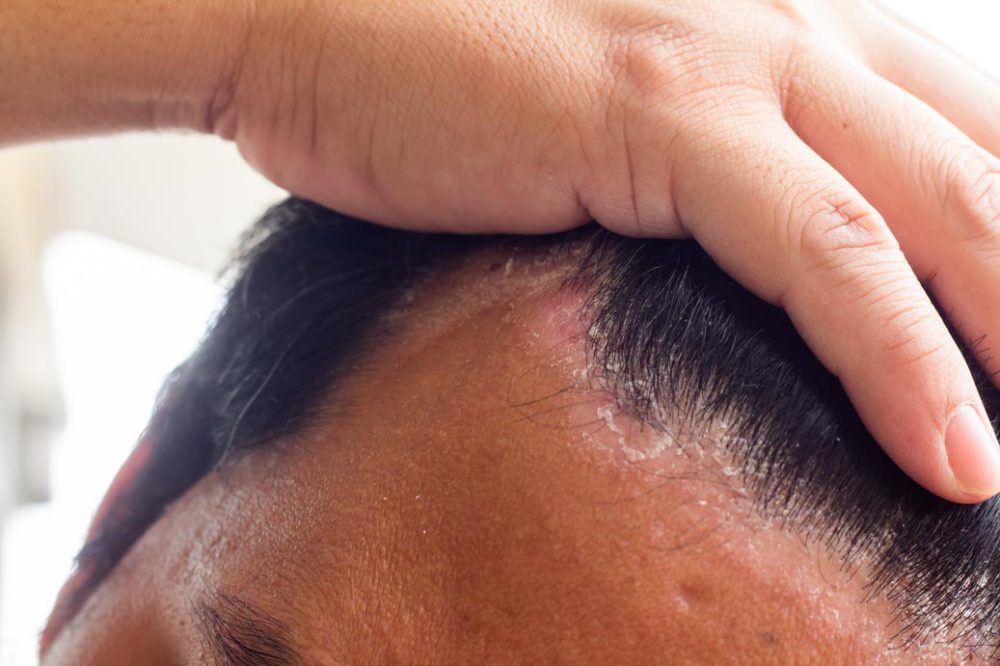Advertisment
New research reveals genomic profile of seborrheic dermatitis and answers key questions on immune response and skin barrier dysfunction – Arcutis Biotherapeutics Inc

Arcutis Biotherapeutics, Inc., highlights new research that, for the first time, reveals the gene expression profile of seborrheic dermatitis . The Arcutis sponsored research from The Kimberly and Eric J. Waldman Department of Dermatology at the Icahn School of Medicine at Mount Sinai was presented in a scientific session at the American Academy of Dermatology (AAD) annual meeting (San Diego, CA, March 8 – 12) and answers key questions on the immune response and associated skin barrier disruption of seborrheic dermatitis.
“Our research group has had a longstanding interest in defining the immunological pathways that underlie many inflammatory skin diseases, such as atopic dermatitis and psoriasis, shaping our understanding of these diseases and leading to new treatments,” said Emma Guttman-Yassky, MD, PhD, the Waldman Professor of Dermatology and Immunology and Health System Chair of The Department of Dermatology, and Director of the Laboratory for Inflammatory Skin Diseases at the Icahn School of Medicine at Mount Sinai. “We are excited to have successfully employed noninvasive tape-stripping techniques developed from studying these diseases to study an understudied and undertreated inflammatory skin disease, seborrheic dermatitis. These findings will help establish the groundwork for greater understanding of this very common condition.”
“The pathophysiology of seborrheic dermatitis has been poorly understood. We sought to understand the gene expression patterns in seborrheic dermatitis in order to determine if this profile is distinct from or similar to other immune-mediated skin conditions,” said Benjamin Ungar, MD, director of the Alopecia Center of Excellence and director of the Rosacea & Seborrheic Dermatitis Clinic at Mount Sinai Health System.
“Our data reveal that seborrheic dermatitis has a distinct immunological molecular profile. In addition, the skin barrier disruption observed in seborrheic dermatitis has unique molecular underpinnings, primarily in the tight junction of the epithelial skin cells and lipid metabolism pathways. These findings are the first to characterize the molecular profile of seborrheic dermatitis, and they will play an important role in advancing our understanding of this common and under-treated condition.” Dr. Ungar is also an assistant professor of Dermatology at the Icahn School of Medicine at Mount Sinai.
The data reported at AAD are from an observational study in which tape-strips were collected from facial lesions from 27 untreated patients with seborrheic dermatitis (Investigator’s Global Assessment score mild [IGA 2, n=400], moderate [IGA 3, n=19], severe [IGA 4, n=4]) and the facial skin of 18 healthy controls and analyzed with RNA sequencing (RNA-seq). Tape-strips are a non-invasive alternative to biopsy for transcriptome analysis and expression profiling.
These data demonstrate that seborrheic dermatitis is an immune disease with a uniquely polarized profile distinct from atopic dermatitis and plaque psoriasis. In addition, skin barrier disruption is suggested by a downregulation of tight junction and lipid metabolism genes. Specific findings include : i. 1,374 differentially expressed genes (DEGs) were identified between seborrheic dermatitis and healthy controls (674 with increased expression, 700 with decreased expression). ii. Strong and significant upregulation of Th17-related (i.e. IL23A, PI3, LL37) and Th22-related (i.e. IL22, S100A8, S100A12) pathways were detected in seborrheic dermatitis compared with controls. iii. Seborrheic dermatitis also showed significant Th1 activation (OASL, STAT1, CXCL9) compared with controls. iv. There was significant downregulation of skin barrier markers (CLDN1/8, FA2H, ELOVL3) in seborrheic dermatitis compared with controls. v. IGA positively correlated with immune markers, including Th1/IFNG, Th17/IL17A, and Th22/IL22 [r>0.3; P<0.1 for all] and negatively correlated with skin barrier markers (SMPD4, MGLL, PLA2G15 [r<-0.38; P<0.05]).
“Despite the high prevalence of seborrheic dermatitis, there has been little dedicated clinical or basic research into the underlying cause of this chronic, inflammatory skin disease for decades. Through this collaborative research effort, we have begun to shed some light on the pathways involved in the immune response and demonstrate that seborrheic dermatitis is clearly distinct from psoriasis or atopic dermatitis, which may help explain the clinical expression of the disease, and ultimately provide important insights into its management,” said Patrick Burnett, MD, PhD, FAAD, chief medical officer, Arcutis. “We are committed to advancing the scientific understanding of this disease through additional research and collaboration with the larger dermatology research and clinical community.”





